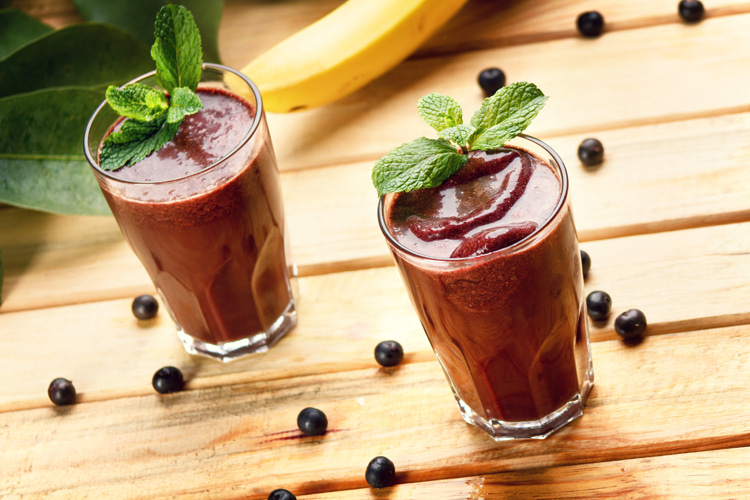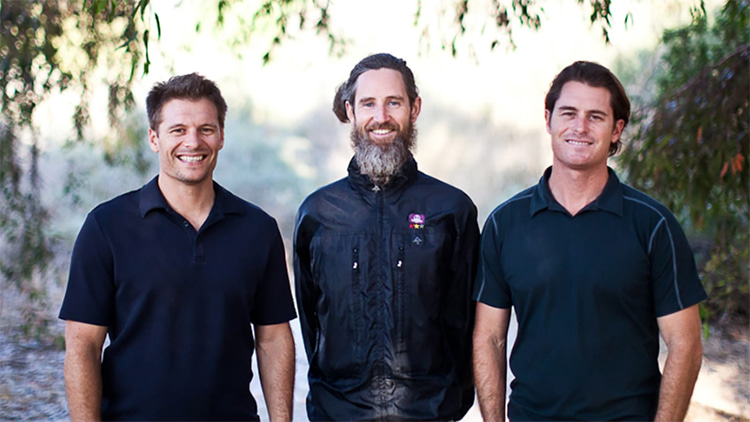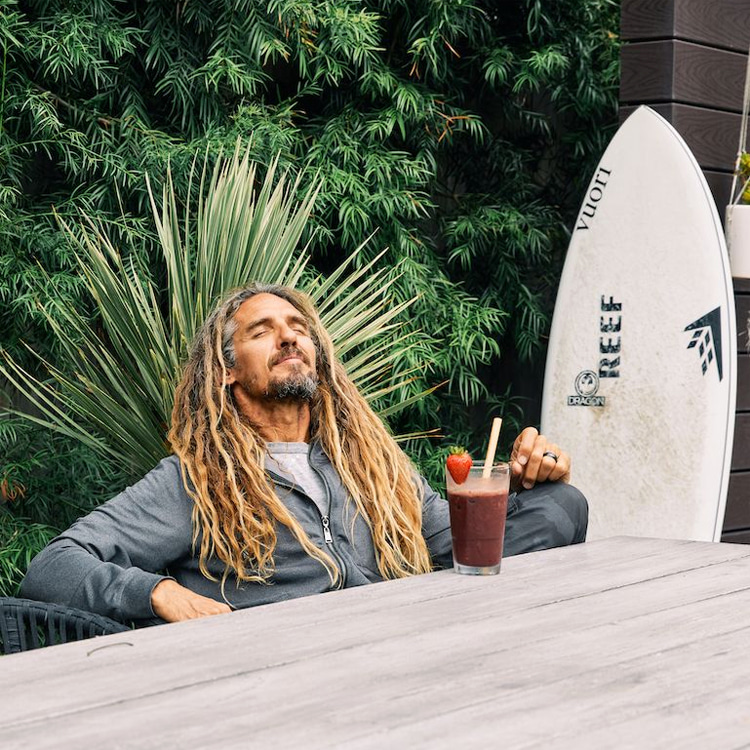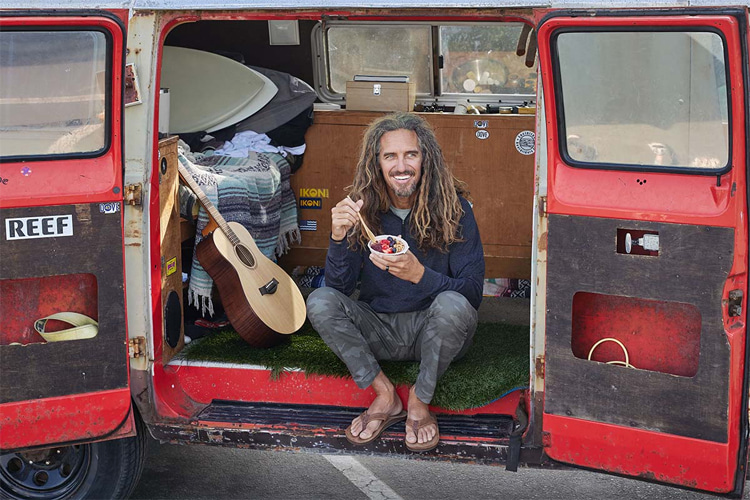Açaí is one of the most popular fruits among the 21st-century generations. Believe it or not, three surfers are responsible for making it a global superfood, juice, and ice cream delight.
Açaí is one of the most nutritious foods on the planet. In the Tupi language, it means the "fruit that cries."
It is rich in powerful antioxidants, heart-healthy omega fats, amino acids, fiber, protein, vitamins, and minerals.
Açaí oil has a fatty acid portion reminiscent of olive oil and is rich in healthy omegas, substances that are believed to be beneficial for skin and hair.
The dark purple pigments of açaí are part of a unique class of phenolic plants called anthocyanins, known for their powerful antioxidant capacity, anti-inflammatory potential and ability to combat free radicals (unstable molecules that can lead to premature aging and degenerative diseases).
The fruit, also known in English as acai, has 10 to 30 times more antioxidants than red wine.

The Surf-Açaí Connection
It was based on these assumptions that one day, two recreational surfers decided to launch an açaí venture that would change the world.
The story begins when two young American amateur surfers, Ryan Black and Edmund "Skanda" Nichols, go on a trip to Brazil to enjoy the turn of the Millennium.
During their stay in the country, they were introduced to açaí by surfers from the resort region of Porto de Galinhas on the coast of Pernambuco.
They were fascinated by that purple apple, chilled and served in bowls, which had incredible nutritional value and was very popular among the sportspeople.
Before the end of their vacation, the young people saw a great opportunity that would benefit local communities and preserve the Amazon Rainforest and began to put together a plan to share açaí with Americans.
Together with Ryan's brother, Jeremy Black, who was an American football player and surfer, they founded Sambazon on April 20, 2000, in San Clemente, California.
The company is an abbreviation for "Saving and Managing the Brazilian Amazon."
Their goal was to introduce the small fruit of the Amazon palm tree in North America and be the first to register açaí with the Food and Drug Administration (FDA) and legally export it.
In April 2001, after a few visits to Pará, the main producer of açaí in Brazil, Ryan shipped a 20-ton container of frozen pulp to California.
It would be the first of many.

The American Break-Through
The young Californians, who grew up idolizing surfers like Kelly Slater and Rob Machado, started sharing the açaí pulp in a bowl with friends.
If they liked it, they were asked to promote it using Sambazon t-shirts, putting stickers on their cars, and telling everyone it was the best thing in the world.
While Travis Baumgardner, a co-founder of Sambazon, was busy organizing cooperatives, certificates, and sustainable production in Brazil, Ryan Edmund and Jeremy distributed the açaí pulp/puree in bars and gyms in the United States.
However, the Amazon fruit did not pick up quickly in the American market.
Due to its exotic appearance, dark color, and earthy flavor, few distributors were interested in purchasing the fruit the young surfers brought from Brazil.
Sambazon invested in marketing and getting famous chefs from Los Angeles to create new açaí-based recipes, but the exotic fruit ended up sidelined to juice and smoothie bars.
Sambazon's destiny changed dramatically in 2002 when the company received a call from renowned dermatologist Nicholas Perricone.
The author of best-sellers on anti-aging treatments was looking for more information about açaí to include in his new book.
"The Perricone Promise: Look Younger Live Longer in Three Easy Steps" featured a list of foods rich in antioxidants, fiber, and vitamins.
At the top of these ingredients was açaí.
The publication was a best seller, and from then on, açaí rose to stardom, not just among young athletes but also celebrities and healthy lifestyle enthusiasts.
Suddenly, the creamy ice cream from Pará began to outsell protein shakes and became a huge hit.
Sambazon even set up a tent at Sundance, the world's most important independent film festival, to capitalize on the trend and promote the tropical fruit.
From Superfood to Surfer Bowls
Americans liked açaí because it was tasty and valued that it was an organic, certified product from the Amazon.
Furthermore, the product was advertised as slimming and rejuvenating food, thanks to its powerful antioxidants, omega fats, amino acids, fiber, proteins, vitamins, and minerals.
Soon, the four entrepreneurs were selling açaí like popcorn and launching subproducts containing and mixing it with other tropical fruits.
From then on, açaí went from being a natural product to competing for a place in the competitive ready-to-drink beverage segment.
There were fit girls drinking açaí on the beautiful beaches of San Diego, naturalists from San Francisco back and forth with bowls of açaí in their hands, and Berkeley students smearing themselves with Pará's pulp.
The American company was investing millions of dollars in marketing and new açaí-processing facilities in Brazil, where the fruit is transformed into pulp up to 36 hours after harvest, the maximum period that the superfruit can withstand before rotting.
Sambazon ensured that the production process did not involve the use of pesticides, monoculture, or labor exploitation.
"These efforts have created sustainable employment for thousands of small farmers and continue to help protect the biodiversity of the Amazon Rainforest, making the forest more valuable standing than deforested," Jeremy Black once stated.
The growth was enormous, with influential TV presenter Oprah Winfrey also helping the cause.
To put things in perspective, sales increased 70 percent between 2007 and 2008, from $62 million to $106 million.

Increasing Its Sustainability
In the following years, Sambazon launched several drinks containing natural ingredients such as açaí, acerola, yerba mate, and guaraná, opened cafés in California, and introduced its products overseas.
"We review our sales data just like any other company, analyzing our costs against our profits and trying to deliver the best products at the lowest prices to our customers," Black revealed in 2009.
Sambazon's link to surfing reached new heights when the California company sponsored the 2021 WSL Finals at Lower Trestles and the World Junior Championships in subsequent years.
Bethany Hamilton, Coco Ho, Rob Machado, Kassia Meador, and Bob Burnquist were ambassadors and team riders for the American brand.
Açaí is now a global product with multiple uses.
In 2022, the State of Pará produced 17,985,000 pounds (8,158 tonnes) of açaí berries, that is, 90 percent of Brazil's total production of the superfood.
Nevertheless, only between 5 and 15 percent of the Brazilian Amazon berries end up as food or beverage.
The remainder ends up in landfills and waterways, so new ways to transform the residue into bioplastics, wooden products, fertilizers, and ingredients for the cosmetic and pharmaceutical industries are now being explored.
Words by Luís MP | Founder of SurferToday.com
